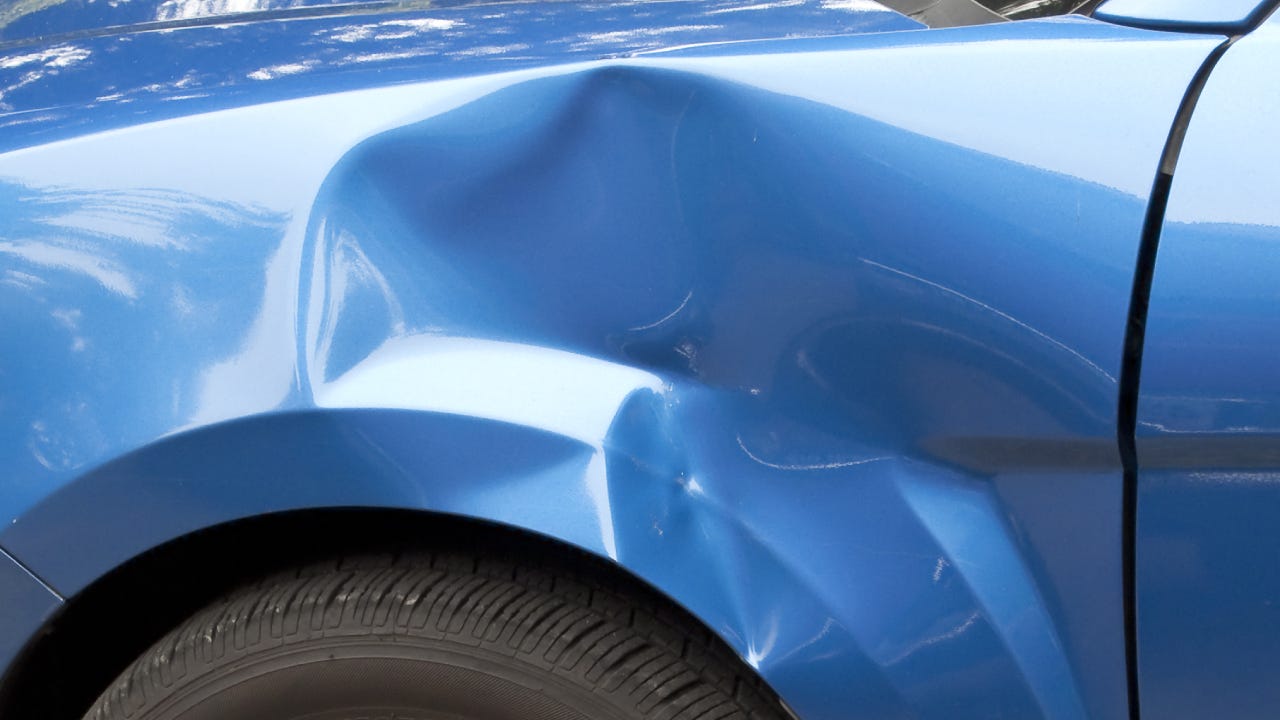What to do after a hit-and-run in Georgia

The Bankrate promise
At Bankrate, we strive to help you make smarter financial decisions. To help readers understand how insurance affects their finances, we have licensed insurance professionals on staff who have spent a combined 47 years in the auto, home and life insurance industries. While we adhere to strict , this post may contain references to products from our partners. Here's an explanation of . Our content is backed by Coverage.com, LLC, a licensed entity (NPN: 19966249). For more information, please see our .
Any accident is likely to leave you shaken, but being involved in a hit-and-run can be especially frightening. Leaving the scene of an accident without exchanging information with the other driver is illegal in Georgia and can result in fines, jail time and other penalties — including increased insurance rates. A hit-and-run has the potential to increase insurance rates for both the perpetrator and the victim, but fortunately, there are a few coverage types that may help you pay for the damage caused by a driver who flees the scene of the accident.
Hit-and-runs in Georgia
When you get in a car accident, it can be stressful, especially if you are at fault. But it’s never a good idea to leave the scene of the accident without making sure the other vehicle and its passengers are safe. Fleeing the scene of an accident like this is called a hit-and-run, and Georgia ranks fourth in the U.S. for the number of fatal hit-and-run accidents. If you leave the scene of an accident without following the appropriate procedures and laws, it can lead to serious penalties and even jail time.
Hit-and-run laws in Georgia
A Georgia hit-and-run is serious. Any driver 21 years old or younger leaving the scene of an accident faces a six-month license suspension for a first offense and 12-month license suspension for a second offense. Driving privileges must be suspended for any driver convicted of a hit-and-run in Georgia. If you are convicted of more than one hit-and-run within a period of five years, your driver’s license may be revoked.
A first conviction for a hit-and-run may also net you a fine of between $300 and $1,000, and potential jail time of up to 12 months. A second conviction within five years raises the fine to between $600 and $1,000 along with a possible year in jail. For a third or subsequent conviction, the fine is $1,000 and possible prison time.
If you are convicted of a hit-and-run, your penalties may be dependent on the specific scenario and your past driving history.
How does a hit-and-run affect car insurance in Georgia?
Whether you are the perpetrator of a hit-and-run or the victim of one, you may see a change to your car insurance rate after the accident. Georgia’s average insurance rates are fairly high at $2,718 for full coverage, which includes collision and comprehensive, and $814 for state-mandated minimum coverage. National averages, for comparison’s sake, are $2,314 for full and $644 for minimum insurance.
After an accident in the state, the average rate for full coverage increases to $3,793. You may see an even higher rate if you cause a hit-and-run and are caught. Unfortunately, even the victim of a hit-and-run could see an increase in their policy rate, too. If you have collision insurance, you can file a claim with your insurance company for damage caused by a driver who flees the scene. Insurers assess rates based on the level of risk they take on by insuring you, and if you have been involved in an accident, even if you were not at fault, your carrier may place you in a higher risk category.
Keep in mind, however, that your rate is unlikely to match the average, since it is based on a number of factors that are unique to you, such as your overall driving record, your age and gender and your car’s make, model and age. If you have an optional type of coverage called accident forgiveness, that may also impact your rate following a hit-and-run.
What to do after a hit-and-run in Georgia
Getting into an accident can be frightening, and when the other driver flees the scene, the scenario can be even more stressful. Knowing what steps to take in advance can help you make sure you take care of everything you need to do.
- Check for injuries and call 911: Your first priority is to your safety and the safety of those around you. Check yourself, your passengers and anyone else involved for injuries and call the emergency services if there’s a need. Remember that injuries may not be immediately apparent after an accident, so consider calling for medical assistance even if you and your passengers feel fine.
- Move your car: If you can, move your car to a safe spot nearby, such as a shoulder or nearby parking lot. You shouldn’t move too far from the accident scene, but getting out of the flow of traffic is the safest option.
- File a police report: The police can help you record details about the other driver that you remember, take witness statements and could eventually find the at-fault party.
- Take pictures of your car: If it is safe to do so, take photos of the damage to your vehicle and record the details of the accident. Doing this as soon as possible after the crash could help you keep a record of what happened.
- File an insurance claim: If you want to file a claim on your own insurance policy, you can call your company to do so. Many companies also have claims services on a mobile app or website. You may want to provide the police report number and the photos of your damage.
Frequently asked questions
-
-
It may, depending on the types of insurance coverage you have. If the perpetrator of the accident is found, it is likely that their policy will cover damage and medical costs. If not, you may wish to file a claim with your own insurer. Although this may mean you’ll have to pay a deductible, you may be able to have your insurer pay if you have one of the following coverage types:
- Collision: A full coverage policy, which includes collision coverage, could pay for the damage to your vehicle or other property, although you will need to first pay your deductible.
- Medical payments: Also called medpay, this option can help pay for any injuries you or your passenger sustain in the accident. It’s an optional type of insurance in Georgia, but it is available to be added on to your policy for a cost.
- Uninsured/underinsured motorist coverage: In some cases, this coverage may help pay for damage or injuries if the other driver isn’t found. If they are found and don’t have enough or any insurance coverage, this may also be able to be used. This coverage type is optional in Georgia.
-
It depends on what type of coverage you have and how you are handling the damage. If the other driver is found and has insurance coverage, your damage should be taken care of by their liability coverage and no deductible will apply. However, if you file a claim for your damage on your own policy, you may have a deductible depending on the coverage you use. Collision coverage generally has a deductible, for example, but medical payments coverage does not.
-
The best car insurance company will likely be different for everyone. Adding a hit-and-run claim may make it more difficult to find a favorable rate with a car insurance company, so it may be a good idea to shop around with several companies. A hit-and-run is not the only thing that will impact your car insurance rate. Car insurance companies usually consider your full driving history, your location, your vehicle type and your age when quoting you a rate.
-
If you have caused a hit-and-run, the incident may stay on your driving record for life. However, when it comes to your insurance, claims generally only surcharge for three to five years. The exact time range varies by company, but your claim shouldn’t affect your premium indefinitely.
-
-
Bankrate utilizes Quadrant Information Services to analyze April 2024 rates for all ZIP codes and carriers in all 50 states and Washington, D.C. Rates are weighted based on the population density in each geographic region. Quoted rates are based on a single, 40-year-old male and female driver with a clean driving record, good credit and the following full coverage limits:
- $100,000 bodily injury liability per person
- $300,000 bodily injury liability per accident
- $50,000 property damage liability per accident
- $100,000 uninsured motorist bodily injury per person
- $300,000 uninsured motorist bodily injury per accident
- $500 collision deductible
- $500 comprehensive deductible
To determine minimum coverage limits, Bankrate used minimum coverage that meets each state’s requirements. Our base profile drivers own a 2022 Toyota Camry, commute five days a week and drive 12,000 miles annually.
These are sample rates and should only be used for comparative purposes.
Incidents: Rates were calculated by evaluating our base profile with the following incidents applied: clean record (base) and at-fault accident.
Related Articles



